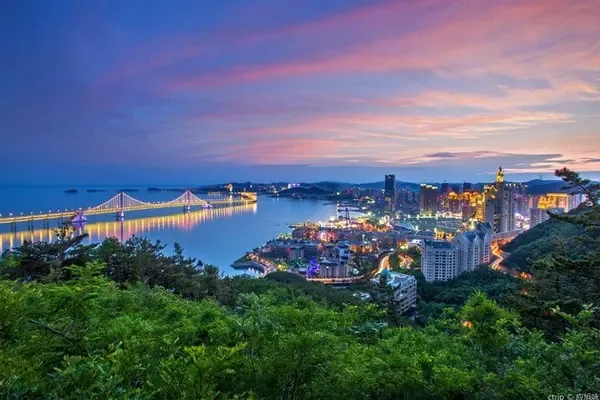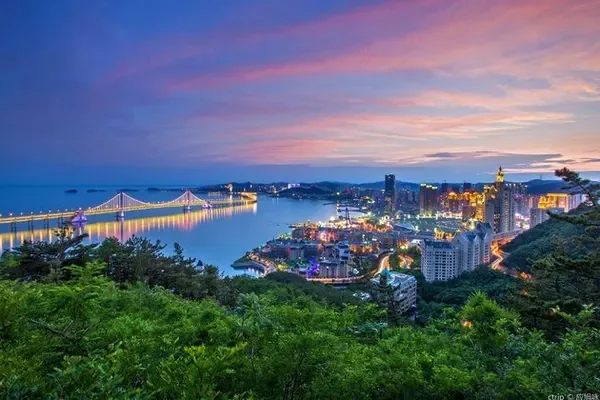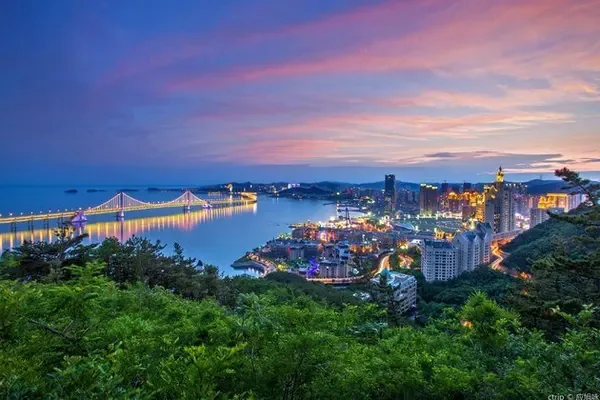I have always had a sense of mysterious anticipation for the Qinghai-Tibet Plateau. I yearn for the blue sky and white clouds and the prairie where cattle and sheep are low in the wind and grass. I really want to listen to a Sanskrit sound in front of the Buddha, sigh, and feel that if there is an afterlife, I would like to be a tree, quietly and unreliable.
Route overview: Chengdu → Jinchuan → Seda → Maerkang → Chengdu, 4 days and 3 nights
Chieftain Zhuo Keji's official village
When the car passed Wenchuan, I wanted to stop, but because of the rush of time, I could only take a look at it from the window.





Zhuokeji Tusi Village is located in Zhuokeji Town, about 7 kilometers southeast of Malkang County, on the high ground at the confluence of Suomo River and Xisuo River, and also the intersection of the two highways from Malkang to Chengdu and Xiaojin. It is surrounded by mountains and rivers. The scenery is beautiful.







Guanzhai was first built in the Qianlong period of the Qing Dynasty. It was built on the mountain, facing south from the north, and looked like an ancient castle with fortified walls from a distance. The main body of Guanzhai is composed of four groups of tall stone and wood buildings, which are connected by wooden mortise and tenon without using a single nail. Through typical architectural features such as stone walls, corridors, and flower windows, the exquisite architectural art of the Tibetan and Han peoples are integrated. It is praised as "a pearl in the history of oriental architecture".


The corridor next to the patio in the inner courtyard of Guanzhai consists of columns, wooden floors and wooden railings. There are a total of 21 pillars on the roof, distributed around the patio, supporting the floors, roof beams and triangular wooden racks. The colonnade is composed of two upper and lower trees, and the upper and lower joints are fitted with hidden tenon and tenon. The workmanship is fine and there is no trace, just like the whole wood. Each colonnade is 15 meters long, and the bottom is big and the top is small, all in one go. The floor slab is flatly laid on the rectangular beams that are protruded from the wall and pierced with the pillars. The railings are made of carved wooden strips to form geometric or auspicious pane patterns, and the large and small panes on the railings are all equipped with five-color glass. The railings surround the columns, the columns support the railings, and the five-color glass is colorful under the reflection of the setting sun. The entire inner courtyard is filled with a strong national cultural atmosphere.







In addition to its architectural artistic value, Guanzhai also has important historical significance. During the Long March of the Red Army, Mao Zedong and the central authorities stayed in Guanzhai for a week, and held a meeting of the Standing Committee of the Political Bureau of the Central Committee here to discuss issues related to ethnic minority areas.





When I was traveling, I happened to meet a group of college students taking pictures during the National Day

Guanyin Temple
Guanyinqiao District, Jinchuan County, on Nale Mountain at an altitude of 3685 meters. It is one of the holy places of Tibetan Buddhism in the famous Tibetan area. It is named after the main offering to Guanyin Bodhisattva in the temple. Tujiqinbo (Avalokitesvara Temple): Located on Nale Mountain in Guanyinqiao Town, Jinchuan County, it is famous all over the world for enshrining the four-armed Avalokitesvara Bodhisattva. The temple belongs to the Nyingma School (Red Sect) of Tibetan Buddhism. The temple directly under the jurisdiction of Ma Rinpoche has the reputation of "Second Lhasa" and "Second Putuo Holy Land" in Tibetan areas.











The Guanyin Temple in Guanyin Town is one of the three avenues of Guanyin Bodhisattva. It is said that three times of pilgrimage to Jinchuan Guanyin Bridge is equivalent to going to the Potala Palace once.





Guanyin Town has the world's heaviest prayer wheel and the world's largest mulberry oven



Almost all the buildings in Guanyin Town have Tibetan features, but many of the shop owners are from Chengdu, Mianyang, Leshan and other places in Sichuan.





Departing from Chengdu at 4:30 in the morning, stop and go all the way, after fifteen hours, different scenery and different perceptions. The temperature difference here is very large, you need an electric blanket to sleep in the morning and evening, and there is plenty of sunshine at noon, so it’s not a bad idea to wear short sleeves


Dongga Temple
Dongga Temple is a famous Red Sect temple in Tibetan area and is listed as one of the three major temples in Seda. The temple was founded by Qu Xiwujin in 1686. It is located on a sacred mountain shaped like a white conch. There is a sitting statue of Sakyamuni in the hall, with religious murals painted on three sides, and dragons and flowers carved on the red pillars. The colors are gorgeous and eye-catching. , the atmosphere is solemn and solemn. The monastery holds various large and small Dharma meetings every year, especially during the Guru Rinpoche Prayer Dharma Assembly held from the first to the tenth day of March. The monks chant scriptures to pray for world peace and the well-being of all living beings, and perform Buddhist activities such as Tibetan opera performances and Vajra dances. , the event is unprecedented, and tourists can also visit and feel here. At present, the monastery has a school of lectures on secrets and secrets and a retreat meditation institute, with more than 400 monks living and studying.









Dongga Temple, not very big, has a profound cultural heritage of the Tibetan Buddhist capital, solemn and quiet












Wuming Buddhist College
Seda Wuming Buddhist College, the full name is Seda Larong Wuming Buddhist College, referred to as Wuming Buddhist College (Buddhist colleges that teach Wuming all have Wuming Buddhist College): located in Seda County, Ganzi Tibetan Autonomous Prefecture, Sichuan Province About 20 kilometers southeast of the county seat, at an altitude of 3600 meters. Surrounded by mountains, the monastery houses in the ditch, with the Sutra Hall of the Buddhist College as the center, are densely packed on the surrounding hillsides. There are many crimson red cabins, rolling up and down, which is magnificent. These red cabins are the residences of 5,000 monks and laymen (men who become monks are called Zaba, and women who become monks are called Juemu, which is the female venerable). [1] It and Yaqing Temple are among the best large temples.
Seda Larung Wuming Buddhist Academy was founded by King Jigme Phuntsok in 1980. In just 30 years, it rose rapidly from the depths of a valley in the Tibetan area and became the largest Tibetan Buddhist Academy in the world. Five thousand lay monks practice and live here. The precepts of the Buddhist academy are very strict, and the monasteries for men and women are clearly separated.


Regardless of whether you are traveling with a group or by car, all foreign vehicles are not allowed to enter the Buddhist Academy. You can only get off at the parking lot and walk for about ten minutes to the ferry station to get on the bus to enter the Buddhist Academy. The ferry ticket is 3 yuan. There is simple oxygen for sale at the ferry station. If you have altitude sickness, it is best to buy a bottle and inhale oxygen while walking.



After getting off the bus, you can see this scene from the foot of the mountain: in front of you are densely packed red houses





It was already five o'clock in the afternoon when I arrived at the Buddhist Academy after watching the burial. I got off the ferry and went straight to the viewing platform. I was worried that I would not be able to take pictures of the beautiful scenery in the dark, so I ran up the mountain with confidence. Halfway through Suddenly, I felt my feet go soft, and I was almost out of breath. The whole journey was full of people who went up the mountain. After all, the altitude was more than 4,000 meters. Fortunately, I brought an oxygen bottle, and I took a few breaths to slow down. Overlooking the entire Buddhist Academy from the observation deck, it is so spectacular! Waving the camera desperately to capture the most beautiful moment.


Whether you come for photography or to understand Tibetan Buddhism, you are willing to crush yourself in the crimson red




The monastery houses here are spectacular, and the valleys stretching for several kilometers are covered with densely packed small wooden shacks. There are several temples and Buddhist halls scattered on the bottom of the valley and on the ridges. Although the scale of the buildings is not very large, they are elegantly decorated and brilliant. Lamas and nuns in red robes come and go, and the air is full of vitality and peaceful atmosphere.











There are many vendors selling daily necessities at the entrance of the Buddhist Academy. After class, the students buy some things they need here, and then go to the vegetable market to buy vegetables and cook at home.







Before it got dark, I rushed all the way to the Buddhist Academy at the foot of the mountain. I walked all the way and took pictures. When the mood was still unfinished, the sky gradually darkened. When the whole Seda was lit up with stars, I remembered that there was still a night scene. I really don’t know what motivated it to support it. I, and then ran all the way from the bottom of the mountain to the viewing platform. When the sky was completely dark, another kind of beauty appeared in front of my eyes. Only then did I know: the beauty of Seda is everywhere!








It is difficult to find a pure land in this materialistic age, and the people here only do one thing every day, that is practice: chanting scriptures, day after day, watching the mind, year after year, enjoying the fun of faith may also be a kind of happiness.
The red color is strong, but I yearn for the silver color more. I keep my heart in the snow, just to meet you in the next cycle.
Some places will miss you forever if you have been there once, and Seda should be counted as one!


